Concord
In 1725 the Massachusetts Bay Colony, which then claimed control of the area, granted land here to found the Penacook Plantation. It was settled between 1725 and 1727 by a group from Haverhill, Massachusetts led by Captain Ebenezer Eastman. The settlement was named Rumford in 1733. The area was disputed between the Commonwealth of Massachusetts and the Province of New Hampshire, a dispute that when as far as the the British Privy Council before being settled in favour of New Hampshire in 1762. In 1765 the town was renamed Concord to reflect the eventual peaceful settlement of the boundary dispute. In 1808 Concord became the capital of New Hampshire but government was not its main industry. Furniture-making and granite quarrying became major industries in the city. In 1828 the Abbot-Downing Company was founded in the city to build coaches and carriages. One of their best known products was the Concord Coach which was widely used by Wells, Fargo & Co. The company stopped manufacturing after World War I and the name was purchased by Wells Fargo who use it as the brand for their management service for very high net worth individuals. Stone quarrying still takes place in Concord and there are also health care, insurance and printing companies based in the city. The 1986 Space Shuttle Challenger disaster was a huge blow to the city because one of those who died was Concord school teacher Christa McAuliffe.
Legislative Office Building
This classic late Victorian building was designed by James Riss Hill and built in 1889 from local granite. Its original purpose was to house Concord's post office, a Federal courthouse and Federal Offices. By 1967 the Federal Government no longer needed the building. It is located close to the State House, so New Hampshire acquired the building for use as legislative offices.
City Hall
Concord City Hall is an impressive looking building, so we were surprised to find that there is almost no information about its history on line. All we know is that it was built in 1902 and its spire reaches a height of 38 metres (125 feet). One day, perhaps, the City of Concord will put the history of City Hall on its web site, but at present there appears to no such information.
State Library
The New Hampshire State Library was the first state library in America. It was founded on January 25, 1717 to preserve folios of statutory commands sent to the colony by the British Government. The library continued after independence with a room set aside for it in the State House when it opened in 1819. The library grew until it it occupied the north side of State House. In the late 19th century State House had become too small so the library had to move out into its own accommodation. A dedicated State Library building was built using local granite. It opened in 1895 and is still in use today.
Main Street
You can tell a lot about an American city by looking at its Main Street. In Concord we found a Main Street with elegant old buildings rubbing shoulders with modern buildings that have been designed to blend in. By the 1990s downtown Concord had become a little run down, so in 1997 a Downtown Master Plan was prepared. Its aim was to make ‘Main Street as a friendly and safe place to be and an attractive place to work, shop, dine, and live’. The plans were implemented via the Concord Main Street Project at a cost of $11 million. This picture was taken in 2013 when the work was still in progress, the project was completed in 2015.
DLU1802232
Mary Baker Eddy House
Mary Baker was born on July 16, 1821 in Bow, NH, 10 kilometres (6 miles) from Concord. Her father Mark Baker was a Protestant Congregationalist with very strong religious convictions. As a child she suffered from major bouts of sickness. She married George Washington Glover in 1844 but he died only 6 months later.In 1853 she married Daniel Patterson. In 1862 she became a patient of Phineas Quimby, a magnetic healer from Maine. then after a fall in 1866 she became a patient of homeopath Alvin M. Cushing. She began to merge the strong Christian faith that she had inherited from her father with her interest in healing. It led to her founding the Church of Christ, Scientist, a movement that brought together the Christian faith and spiritual healing. She divorced Daniel Patterson for adultery in 1873 then in 1877 she married Asa Gilbert Eddy. They moved to Boston in 1882 but he died later that year. Mary devoted the rest of her life to turning the Church of Christ, Scientist into a global movement. While doing this she lived in several houses in Massachusetts and New Hampshire. She rented this house in Concord from 1889 to 1892 and while there she undertook a major revision of her work, ‘Science and Health with Key to the Scriptures.’ Mary Baker Eddy died on December 3, 1910 in Newton, Massachusetts. The Concord Mary Baker Eddy House is one of a number in New England that are open to the public in season.
Click on Minimap to navigate
Home > US States > New England > New Hampshire >
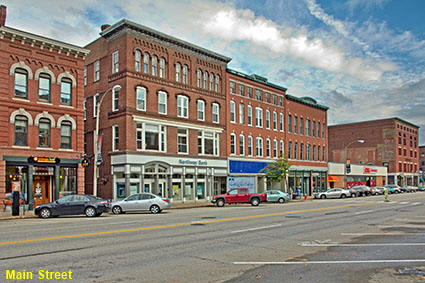
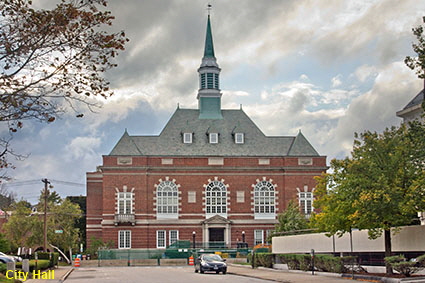
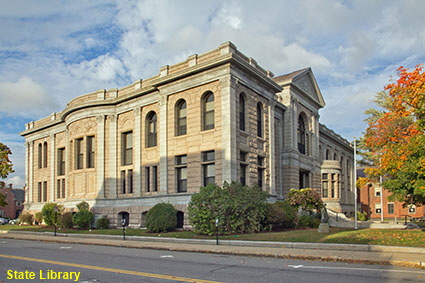
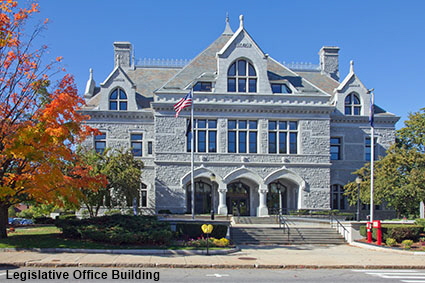
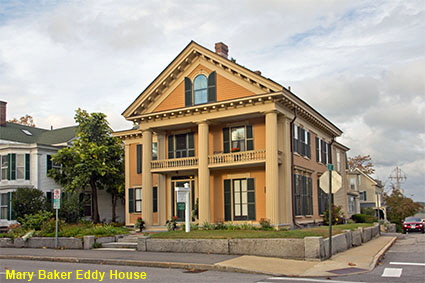


To move forwards or backwards through the New Hampshire trail click the arrows above, or select your next destination on the Minimap.
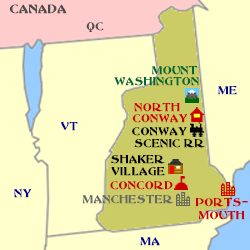

© Mike Elsden 1981 - 2025
The contents of this page may not be reproduced in full or in part without permission